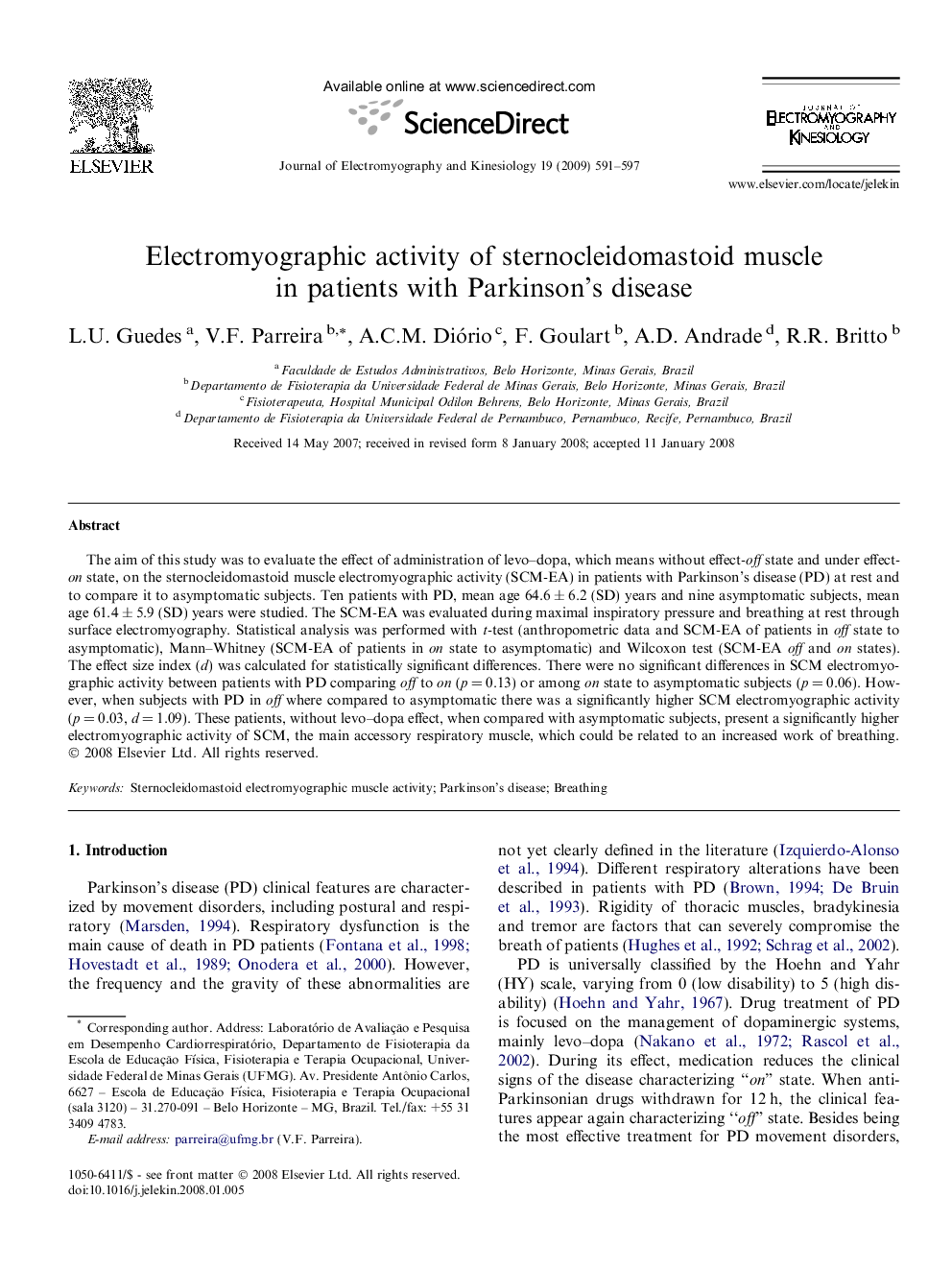| Article ID | Journal | Published Year | Pages | File Type |
|---|---|---|---|---|
| 4065447 | Journal of Electromyography and Kinesiology | 2009 | 7 Pages |
The aim of this study was to evaluate the effect of administration of levo–dopa, which means without effect-off state and under effect-on state, on the sternocleidomastoid muscle electromyographic activity (SCM-EA) in patients with Parkinson’s disease (PD) at rest and to compare it to asymptomatic subjects. Ten patients with PD, mean age 64.6 ± 6.2 (SD) years and nine asymptomatic subjects, mean age 61.4 ± 5.9 (SD) years were studied. The SCM-EA was evaluated during maximal inspiratory pressure and breathing at rest through surface electromyography. Statistical analysis was performed with t-test (anthropometric data and SCM-EA of patients in off state to asymptomatic), Mann–Whitney (SCM-EA of patients in on state to asymptomatic) and Wilcoxon test (SCM-EA off and on states). The effect size index (d) was calculated for statistically significant differences. There were no significant differences in SCM electromyographic activity between patients with PD comparing off to on (p = 0.13) or among on state to asymptomatic subjects (p = 0.06). However, when subjects with PD in off where compared to asymptomatic there was a significantly higher SCM electromyographic activity (p = 0.03, d = 1.09). These patients, without levo–dopa effect, when compared with asymptomatic subjects, present a significantly higher electromyographic activity of SCM, the main accessory respiratory muscle, which could be related to an increased work of breathing.
